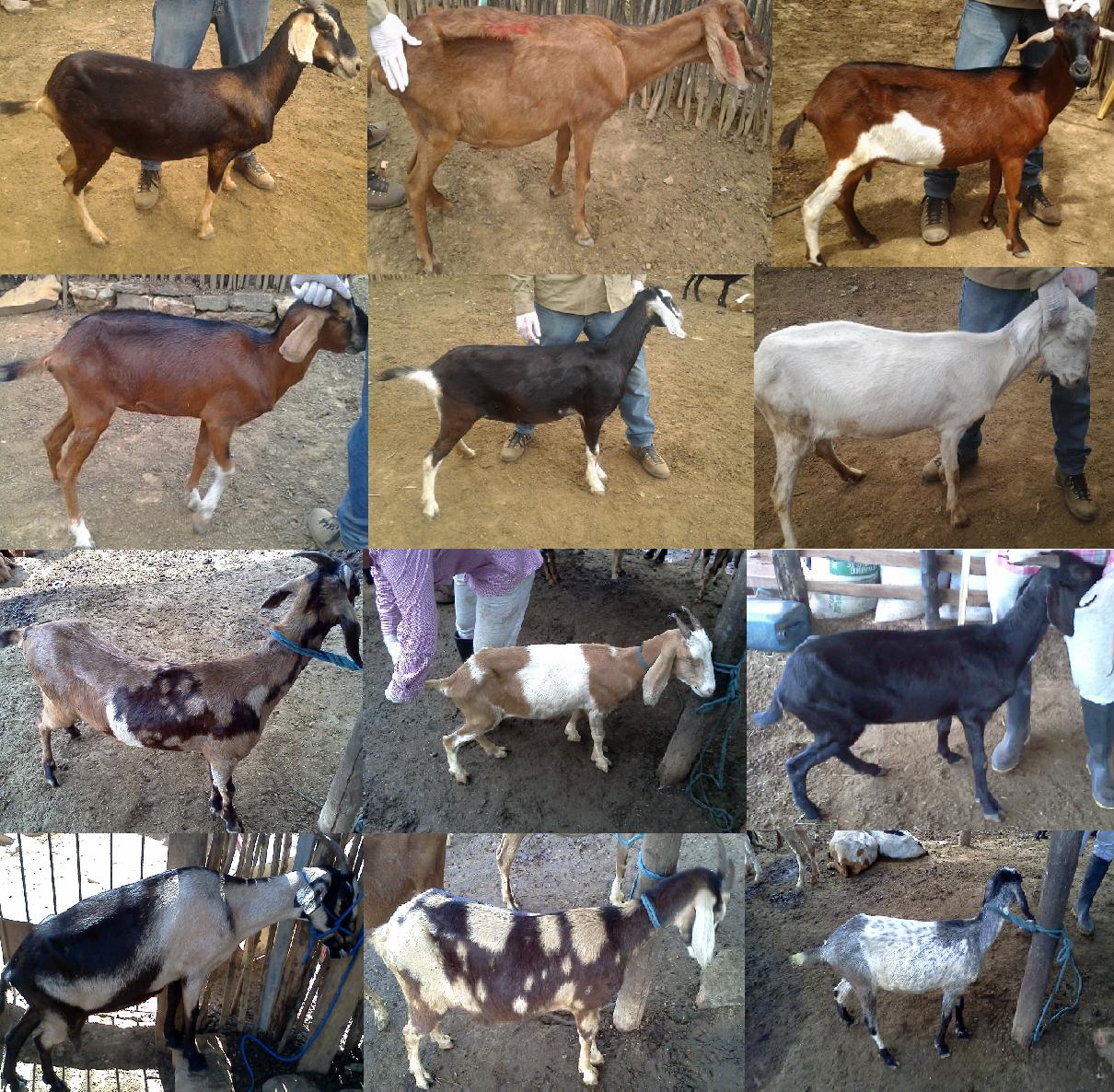Morphological characterization of the Motilona goat from Norte de Santander, Colombia
Caracterización morfológica de la cabra Motilona de Norte de Santander, Colombia


This work is licensed under a Creative Commons Attribution-NonCommercial-ShareAlike 4.0 International License.
Show authors biography
Objective. To describe the morphological characteristics of the Motilona goat of Norte de Santander. Material and methods. A population of 300 individuals (266 females and 34 males) was randomly selected from 8 different farms in the department of Norte de Santander. The morphological characterization of the Motilona goat was done by means of information on 7 qualitative morphological traits and 11 quantitative traits from which 14 zoometric indexes were derived. Results. Sexual dimorphism was found to exist in the qualitative traits of horn type, ear position and number of color layers. Sexual dimorphism was also found to exist among quantitative traits such as face length, head width, withers height, rump width, shank girth and thorax girth. Conclusions. The results of this study suggest that the Motilona goat is a population with homogeneous traits and therefore future studies are required to deepen the knowledge of characterization of other morphological traits and also its productive characteristics.
Article visits 764 | PDF visits
Downloads
- ICA. Censo pecuario nacional. Instituto Colombiano Agropecuario: Colombia; 2020. https://www.ica.gov.co/areas/pecuaria/servicios/epidemiologia-veterinaria/censos-2016/censo-2018.aspx
- Ospina O, Montoya A, Montoya I, Grajales H. Reflexiones sobre la gestión de conocimiento y los sistemas de producción ovina y caprina en Colombia. Veterinaria y Zootecnia. 2014; 8(2):1-14. https://doi.org/10.17151/vetzo.2014.8.2.1
- Castellaro G, Orellana C, Escanilla JP, Ruz Y. Características morfo-estructurales de un rebaño caprino de la zona mediterránea central de Chile. Agro Sur. 2020; 47(2):19-29. https://doi.org/10.4206/agrosur.2019.v47n2-03
- Hoffmann I, Scherf B. Implementing the Global Plan of Action for Animal Genetic Resources. Anim Genet Res. 2010; 47:1–10. https://doi.org/10.1017/S2078633610001050
- Hassen H, Baum M, Rischkowsky B, Tibbo M. Phenotypic characterization of Ethiopian indigenous goat populations. Afr J Biotechnol. 2012; 11(73):13838-13846. https://doi.org/10.5897/AJB12.2092
- Boujenane I, Derqaoui L, Nouamane G. Morphological differentiation between two Moroccan goat breeds. J Livest Sci Technol. 2016; 4(2):31-38. https://doi.org/10.22103/JLST.2016.1515
- Silva-Jarquin JC, Román-Ponce SI, Durán-Aguilar M, Vera-Ávila HR, Cambrón-Sandoval VH, Andrade-Montemayor HM. Morphostructural Characterization of the Black Creole Goat Raised in Central Mexico, a Currently Threatened Zoogenetic Resource. Animals. 2019; 9(7):459. https://doi.org/10.3390/ani9070459
- Solís-Lucas LA, Lanari MR, Oyarzabal MI. Caracterización fenotípica de la población caprina de la provincia de Santa Elena, Ecuador. Arch Zootec. 2020; 69(265):22-29. https://doi.org/10.21071/az.v69i265.5035
- Peña S, López GA, Abbiati NN, Género ER, Martínez RD. Caracterización de ovinos Criollos argentinos utilizando índices zoométricos. Arch Zootec. 2017; 66(254):263-270. https://doi.org/10.21071/az.v66i254.2331
- Barragán RM, Vargas DA, Ruiz VA, Rivera JH. Caracterización de la cabra criolla en la sub-provincia Volcanes de Colima y su sistema de producción. Arch Zootec. 2019; 68(263):332-341. https://doi.org/10.21071/az.v68i263.4190
- Oseni SO, Ajayi BA. Phenotypic characterization and strategies for genetic improvement of WAD goats under backyard systems. Open J Anim Sci. 2014;4(5):253-262. https://www.scirp.org/journal/paperinformation.aspx?paperid=50125
- Rafter JA, Abell ML, Braselton JP. Multiple comparison methods for means. Siam Review. 2002; 44(2):259-278. https://epubs.siam.org/doi/pdf/10.1137/S0036144501357233
- Kaiser HF. The varimax criterion for analytic rotation in factor analysis. Psychometrika. 1958; 23(3):187-200. http://128.174.199.77/psychometrika_highly_cited_articles/kaiser_1958.pdf
- Morrison DG. On the interpretation of discriminant analysis. J Mark Res. 1969; 6(2):156-163. https://journals.sagepub.com/doi/abs/10.1177/002224376900600203
- Di Franco G. Multiple correspondence analysis: one only or several techniques?. Qual Quant. 2016; 50(3):12991315. https://doi.org/10.1007/s11135-015-0206-0
- Rustom JA. Unidad 1 Estadística Descriptiva. Editor: Calandra P. En: Estadística descriptiva, probabilidad e inferencia. Una visión conceptual y aplicada. Edición 1. Universidad de Chile, Departamento de Economía Agraria: Chile; 2012. http://repositorio.uchile.cl/bitstream/handle/2250/120284/Rustom_Antonio_Estadistica_descriptiva.pdf
- Flórez JM, Hernández MDJ, Bustamante MDJ, Vergara OD. Caracterización morfoestructural de tres poblaciones de Ovino de Pelo Criollo Colombiano OPC. Arch Zootec. 2018; 67(259):340-348. https://doi.org/10.21071/az.v67i259.3789
- Abarca-Vargas D, Macedo-Barragán R, Arredondo-Ruiz V, Valencia-Posadas M, Ayala-Valdovinos MA, Hernández-Rivera JA. Análisis de la morfología de la cabra mestiza de la subprovincia fisiográfica Volcanes de Colima, México. Rev Inv Vet Perú. 2020; 31(3):13. http://dx.doi.org/10.15381/rivep.v31i3.16935
- Gutiérrez RS, Luna RG, Nájera MDJF. Caracterización morfológica de un rebaño de conservación de cabras criollas en Zacatecas, México. Arch Zootec. 2018; 67(257):73-79. https://doi.org/10.21071/az.v67i257.3493























